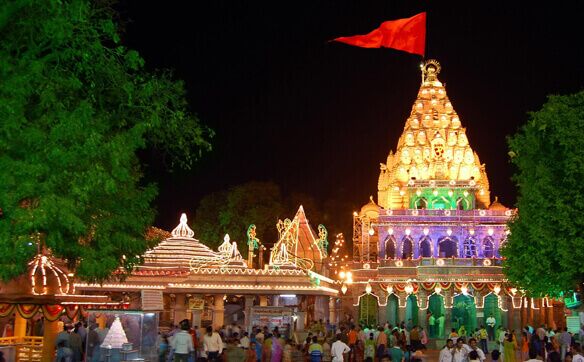


Uncover the deeper symbolism of each shrine in the 3 Dham 11 Jyotirlinga Yatra, revealing Shiva’s many forms and spiritual meanings.
The 3 Dham 11 Jyotirlinga Yatra is not just a pilgrimage to ancient temples—it’s a journey through the many forms and qualities of Lord Shiva. While every Jyotirlinga represents the same supreme energy, each one carries its own symbolism, rooted in mythology, geography, and spiritual experience.
The word Jyotirlinga means “pillar of light”—a form that goes beyond name and shape, showing Shiva as the eternal, formless presence. But each of these twelve sites also speaks to specific aspects of life, reminding us that the divine can be experienced in different ways.
Somnath in Gujarat is the first Jyotirlinga and symbolizes resilience. It has been destroyed and rebuilt many times, teaching that faith can survive anything. Shiva here reflects the power to begin again.
At Mallikarjuna in Andhra Pradesh, Shiva and Parvati are worshipped together, symbolizing balance between masculine and feminine energies. It reminds the pilgrim to walk in harmony within.
Located in Ujjain, Mahakaleshwar is Shiva as Mahakaal—Lord of Time. This temple reminds us to let go of fear and ego, and accept the constant motion of life and death.
Built on an island shaped like ‘Om’, Omkareshwar stands for the sound of creation. The experience here is one of inner stillness and connection to the rhythm of the universe.
At the heart of the Himalayas, Kedarnath stands for endurance, simplicity, and inner strength. During the 3 dham 11 jyotirlinga yatra, this shrine often brings pilgrims face to face with their limits—both physical and emotional.
This shrine in Maharashtra tells the story of Shiva destroying the demon Bhima. It represents victory over negativity and encourages the seeker to face inner darkness with courage.
In Varanasi, Shiva is the Lord of the Universe. Kashi Vishwanath represents spiritual freedom and inner sovereignty. It reminds us to stay rooted even in the chaos of life.
Near the origin of the Godavari River, Trimbakeshwar represents the cycle of birth, life, and death. The three faces of the linga here symbolize Brahma, Vishnu, and Mahesh—creation, preservation, and destruction.
This temple in Jharkhand shows Shiva as a divine doctor. Vaidyanath brings healing on all levels—body, mind, and soul. It teaches trust in the process of recovery and renewal.
Located near Dwarka, Nageshwar represents strength and protection. Shiva here is the fearless one who guards against inner and outer evils. A call to stand firm in your truth.
Rameshwaram unites Shiva and Vishnu bhakti. Here, Lord Rama worshipped Shiva. The site blends duty and devotion, teaching us to act with both heart and purpose.
The 3 dham 11 jyotirlinga yatra is not just about visiting temples—it’s about discovering the many faces of Shiva within yourself. Each Jyotirlinga holds a lesson, a message, and a mirror. Whether it’s strength, silence, surrender, or healing, Shiva meets you in the form you need most.
As you walk through these sacred spaces, you’re not just moving across geography—you’re moving through different layers of your own being. This is the true essence of the yatra: outer darshan, inner awakening.
